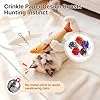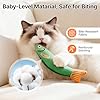As a cat owner, it’s important to know that cats should not eat chocolate. Chocolate is toxic to cats because it contains theobromine and caffeine. These substances can cause a range of symptoms, from mild to severe.
Dogs are more likely to eat chocolate, but cats are also at risk. Even a small amount of chocolate can be dangerous for cats. The amount needed to be toxic varies based on the cat’s size and health.
It’s clear that cats should not eat chocolate. The dangers are real, and it’s important to keep your cat safe. Make sure to store chocolate products where cats can’t get to them. Also, teach everyone in your household about the risks of chocolate and cats.
Key Takeaways
- Cats and chocolate do not mix, and it’s essential to understand the risks associated with it.
- The dangers of cats eating chocolate are real, and can cause a range of symptoms in cats, from mild to severe.
- Cats’ sensitivity to chocolate can vary significantly among individuals, influenced by factors such as age, weight, overall health, and genetic makeup.
- It’s crucial to securely store chocolate products out of reach of cats to prevent accidental ingestion.
- Education on the dangers of chocolate should be a household priority, especially during holidays when chocolate is more accessible.
- Early intervention is critical, with an emphasis on not waiting for symptoms to appear before seeking veterinary care.
Introduction to Chocolate Toxicity in Cats
Chocolate is a big no-no for cats. It can cause serious health problems. The bad stuff in chocolate, theobromine and caffeine, can make cats very sick. They might throw up, have diarrhea, and their heart might beat too fast.
If a cat eats chocolate, it’s very serious. Knowing the signs of chocolate poisoning in cats is key. This way, you can get your cat to the vet fast. How sick a cat gets depends on the chocolate type, how much they ate, and their size and health.
The Compounds in Chocolate that are Toxic to Cats
The bad guys in chocolate are theobromine and caffeine. Cats can’t break down theobromine well, making it even worse. Even a little bit of dark chocolate can harm cats. So, it’s important to keep all chocolate away from them.
Symptoms of Chocolate Poisoning in Cats
Signs of chocolate poisoning in cats can be different. Cats might vomit, have diarrhea, drink a lot of water, or have a fast heart rate. In really bad cases, they could have seizures, stiff muscles, or even fall into a coma. If you think your cat ate chocolate, get them to the vet right away.
To know the risks of what happens if a cat eats chocolate, learn about the bad stuff in chocolate and the signs of poisoning. By keeping chocolate away and knowing the signs, you can keep your cat safe from chocolate dangers.
| Chocolate Type | Toxic Consumption Level for Cats |
|---|---|
| Dark Chocolate | > 0.5 oz (1 – 10 lbs), > 7 oz (11 – 25 lbs) |
| Milk Chocolate | > 1.5 oz (1 – 10 lbs), > 16.5 oz (11 – 25 lbs) |
| White Chocolate | > 360 oz (1 – 10 lbs), > 4000 oz (11 – 25 lbs) |
Why Cats Shouldn’t Eat Chocolate
Cats are naturally curious, which can lead them to eat harmful things like chocolate. Chocolate can make cats sick, causing symptoms from mild to severe. It’s important to keep chocolate away from cats to avoid these problems.
Even a little chocolate can be harmful to cats. The amount of chocolate that can hurt a cat depends on its size and how much chocolate it eats. For example, a 10-pound cat might get sick from just 0.5 ounces of baker’s chocolate. Knowing the dangers of chocolate for cats is key to keeping them safe.
Theobromine and Caffeine Explained
The bad stuff in chocolate for cats is theobromine and caffeine. Theobromine can make cats vomit, have diarrhea, pee more, and have an irregular heartbeat. Caffeine can also cause these problems, so it’s important to keep all chocolate away from cats.
How Cats Metabolize Theobromine
Cats break down theobromine slowly, which can build up in their bodies. This can lead to serious symptoms, even death, if not treated. If you think your cat ate chocolate, get vet help right away.
To stop cats from eating chocolate, keep all chocolate out of their reach. Store chocolate in safe places and watch your cat when you eat it. These steps can help protect your cat from chocolate poisoning.
| Type of Chocolate | Theobromine Content |
|---|---|
| Baker’s Chocolate | 15-25 mg per gram |
| Milk Chocolate | 1.5-2.5 mg per gram |
| Dark Chocolate | 5-10 mg per gram |
Common Symptoms of Chocolate Poisoning
It’s key to know the signs of chocolate poisoning in cats. If a cat eats chocolate, it can be very serious. Quick vet help is needed. Symptoms include vomiting, diarrhea, and a faster heart rate.
Knowing what happens if a cat eats chocolate is important. The symptoms depend on how much and what kind of chocolate. Darker chocolates are more dangerous because they have more theobromine.
The symptoms of chocolate poisoning in cats fall into two groups. Digestive issues include:
- Diarrhea
- Vomiting
- Abdominal pain
Neurological symptoms are more serious and can be:
- Seizures
- Tremors
- Increased heart rate
If you think your cat ate chocolate, get vet help right away. Quick action can stop serious health problems. Remember, chocolate poisoning can be deadly if not treated. Always be safe and talk to a vet if you’re worried.
Different Types of Chocolate and Their Risks
When it comes to cats and chocolate, the type of chocolate matters a lot. Theobromine and caffeine in chocolate can harm cats. Knowing the risks of different chocolates helps keep pets safe.
Whether a cat can eat chocolate depends on the chocolate type and amount. Dark chocolate is especially risky because it has more theobromine. It can be very harmful to cats.
Dark Chocolate: The Most Dangerous
Dark chocolate is the most toxic for cats because of its high theobromine. Even a little can be dangerous. Cats can get sick if they eat about 20 mg of theobromine per kilogram of their body weight.
Milk Chocolate: Still a Risk
Milk chocolate is also risky for cats, though less so than dark chocolate. It has about 57 mg of theobromine per ounce. This can still harm cats.
White Chocolate: Is It Safe?
White chocolate is the least toxic but can still upset a cat’s stomach if eaten too much. It has little theobromine but is not safe for cats to eat.
In conclusion, the dangers of cats eating chocolate are real. Cat owners need to know the risks of different chocolates. This knowledge helps keep pets safe and healthy.
What to Do If Your Cat Eats Chocolate
If your cat eats chocolate, it’s important to know the signs of chocolate poisoning in cats. Look for vomiting, diarrhea, and a fast heart rate. Toxic foods for cats, like chocolate, can be very harmful and need quick action.
Signs of what happens if a cat eats chocolate include being too excited, diarrhea, and vomiting. You might also see tremors, seizures, or a fast heartbeat. If you think your cat ate chocolate, call your vet right away.
In serious cases, like with dark chocolate, the danger is even higher. There’s no cure for chocolate poisoning in cats. Treatment aims to manage symptoms. Getting your cat to the vet quickly is key to avoid worse problems.
Knowing the risks of what happens if a cat eats chocolate is crucial. Keep chocolate away from your cat. This way, you can protect them from toxic foods for cats.
How Much Chocolate is Toxic for Cats?
It’s important to know how much chocolate is toxic to cats. This knowledge helps prevent chocolate ingestion in cats and spots symptoms of chocolate toxicity in cats. The danger of chocolate varies by amount, type, and the cat’s sensitivity. Even a little chocolate can harm cats, especially if they’re sensitive to theobromine.
To avoid chocolate ingestion in cats, keep chocolate away from them. Symptoms of chocolate toxicity in cats can show up 2 to 4 hours after eating chocolate. These signs include stomach problems, restlessness, and a faster heart rate. In severe cases, it can lead to heart failure, coma, and death.
Factors Affecting Chocolate Toxicity
Several things can change how toxic chocolate is for cats:
- Type of chocolate: Dark and baker’s chocolate are more dangerous than milk chocolate because they have more cocoa.
- Amount of chocolate: Even a small bit of chocolate can be harmful, especially for cats sensitive to theobromine.
- Individual sensitivity: Cats react differently to certain substances, and their sensitivity can vary a lot.
Knowing these factors helps keep your cat safe from chocolate ingestion in cats and its dangers. Always keep chocolate out of your cat’s reach. If you think your cat has eaten chocolate, call your vet right away.
Prevention and Treatment
Stopping chocolate ingestion in cats is the best way to avoid symptoms of chocolate toxicity in cats. If you think your cat has eaten chocolate, call your vet fast. Treatment might include making your cat vomit, using activated charcoal, and supportive care.
| Type of Chocolate | Toxicity Level |
|---|---|
| Dark Chocolate | High |
| Milk Chocolate | Moderate |
| White Chocolate | Low |
Preventing Cat Access to Chocolate
To keep your cat safe from chocolate, store it where they can’t get to it. Chocolate toxicity levels in cats can be very harmful. Elevated cat bowls can also help. Knowing what happens if a cat eats chocolate is key to keeping them safe.
Here are some tips to prevent cat access to chocolate:
- Store chocolate in a high cabinet or on a high shelf
- Keep chocolate wrappers and packaging out of reach
- Educate family and friends about the risks of chocolate toxicity levels in cats
It’s important to know the symptoms of chocolate poisoning in cats. These can include vomiting, diarrhea, and a fast heart rate. If you think your cat has eaten chocolate, get them to the vet right away.
| Chocolate Type | Theobromine Content |
|---|---|
| Dark Chocolate | 5-16 mg per gram |
| Milk Chocolate | 0.1 mg per gram |
| White Chocolate | 0.1 mg per gram |
By following these tips and knowing the risks of chocolate toxicity levels in cats, you can keep your cat safe and healthy.
Alternatives to Chocolate for Cats
Cats and chocolate don’t mix well because chocolate is dangerous for them. But, there are many safe and healthy treats for your cat. Cats need a lot of meat in their diet, but some fruits and veggies can be good too. Remember, chocolate is a big no for cats, but there are other tasty options.
Safe treats for cats include cooked, unsalted lean meats and dried liver. You can also make homemade treats with chicken and green beans. It’s important to avoid chocolate and choose treats that don’t have it.
- Cooked chicken or turkey
- Steamed green beans
- Pureed pumpkin
- Plain yogurt
Give treats in small amounts to avoid obesity and health problems. Always talk to your vet before adding new foods or treats to your cat’s diet. This is especially true if you’re worried about chocolate dangers.
| Treat Option | Benefits |
|---|---|
| Cooked Chicken | High-quality protein, low in fat |
| Steamed Green Beans | Low in calories, rich in fiber |
| Pureed Pumpkin | Supports digestive health |
The Role of Veterinary Care
Regular health check-ups are key to keeping your cat healthy. They help spot problems early, especially with toxic foods for cats. If your cat eats chocolate, get vet care fast. This can really help them get better.
Vets use tests like blood work and urinalysis to find chocolate poisoning. Knowing what happens if a cat eats chocolate helps them treat your cat right. Chocolate’s toxin, theobromine, can harm your cat’s liver, so quick vet care is important.
Importance of Regular Health Check-ups
Regular vet visits can catch health problems early, like chocolate toxicity. Knowing about toxic foods for cats and taking steps to prevent them keeps your cat safe and healthy.
How Vets Diagnose Chocolate Poisoning
Vets use physical exams, medical history, and lab tests to find chocolate poisoning. If you think your cat ate chocolate, tell your vet all you can. This includes the type and amount of chocolate.
| Symptoms | Description |
|---|---|
| Vomiting | Forceful expulsion of food from the mouth |
| Diarrhea | Frequent, loose stools |
| Increased thirst | Excessive water consumption |
Myths and Misunderstandings About Cats and Chocolate
Many cat owners don’t know the dangers of chocolate ingestion in cats. They think cats can taste sweetness, but it’s not true. Cats can sense sweetness, but it doesn’t appeal to them like it does to humans. This misunderstanding can lead to symptoms of chocolate toxicity in cats if they eat chocolate, even a little bit.
To stop chocolate ingestion in cats, keep them away from chocolate. Store chocolate safely and teach family and friends about the dangers. Some believe a small amount of chocolate is okay or that white chocolate is safe. But, any chocolate can be harmful to cats. It’s important to prevent symptoms of chocolate toxicity in cats by being careful.
Knowing the risks of chocolate and keeping cats away from it can protect them. Cat owners should watch for signs of chocolate poisoning like vomiting, diarrhea, restlessness, and tremors. If you think your cat ate chocolate, get vet help right away.
Conclusion: Keeping Your Cat Safe from Chocolate
As we’ve discussed, chocolate toxicity levels in cats can be a serious health risk. If a cat eats chocolate, it can lead to symptoms of chocolate poisoning in cats. These symptoms include restlessness, vomiting, and diarrhea. It’s essential to understand what happens if a cat eats chocolate to take preventive measures and ensure your cat’s safety.
To keep your cat safe, it’s crucial to store all chocolate products securely out of reach. You can also provide safe alternatives to chocolate. These can be commercial cat treats or homemade treats made from healthy ingredients. Remember, even small amounts of chocolate can be toxic to cats, so it’s always better to err on the side of caution.
Some key things to keep in mind include:
- Keeping all chocolate products out of reach
- Providing safe alternatives to chocolate
- Monitoring your cat’s behavior and watching for signs of chocolate poisoning
By following these tips and being mindful of the risks associated with chocolate toxicity levels in cats, you can help keep your feline friend safe and healthy. Remember, if you suspect your cat has ingested chocolate, it’s essential to seek veterinary care immediately. This is to prevent serious health complications.
Chocolate contains the toxic components theobromine and caffeine, which can be fatal to cats in large amounts. Even small amounts of chocolate can lead to serious health issues for cats, necessitating urgent veterinary care.
Resources for Cat Owners
As a cat owner, knowing the dangers of chocolate and other toxic substances is key. If your cat eats chocolate, get vet help fast. There are many resources like the ASPCA’s Animal Poison Control Center and the Pet Poison Helpline.
Remember, cats can’t eat chocolate. Chocolate has theobromine and caffeine, which are harmful. The harm depends on how much and what kind of chocolate your cat eats. It’s vital to keep chocolate away from your cat.
Some useful resources for cat owners include:
- ASPCA’s Animal Poison Control Center: (888) 426-4435
- Pet Poison Helpline: (855) 213-6680
- Local veterinary clinics and emergency animal hospitals
Knowing the dangers of chocolate and other toxic items is crucial. Signs of chocolate poisoning in cats include vomiting, diarrhea, more thirst, and restlessness. If you see these signs, get vet help right away.
It’s also important to keep other harmful items away from your cat. Items like grapes, raisins, onions, and garlic are dangerous. By knowing these dangers and keeping them away, you can keep your cat safe and healthy.
| Toxic Substance | Symptoms |
|---|---|
| Chocolate | Vomiting, diarrhea, increased thirst, restlessness |
| Grapes and Raisins | Vomiting, diarrhea, lethargy, kidney failure |
| Onions and Garlic | Vomiting, diarrhea, lethargy, anemia |
Final Thoughts on Cat Nutrition and Safety
As a cat owner, keeping your pet safe and healthy is key. Knowing about toxic foods for cats like chocolate is important. Chocolate can lead to chocolate poisoning in cats. Symptoms include vomiting, diarrhea, and a fast heart rate.
It’s vital to keep cats away from toxic foods for cats to avoid chocolate poisoning in cats. For more info on cat nutrition and safety, check out relevant resources or talk to a vet. Important points include:
- Don’t give cats human food, especially chocolate or caffeine
- Feed them a balanced diet, with cat food being 95% of their calories
- Snacks should only be 5% of their daily calories, choose healthy options like green beans or carrots
Being careful about toxic foods for cats and preventing chocolate poisoning in cats is crucial. This way, your cat can live a long, healthy life. Always put your cat’s nutrition and safety first. If you’re worried about what happens if a cat eats chocolate or other harmful substances, talk to a vet.
| Toxic Food | Effects on Cats |
|---|---|
| Chocolate | Can cause vomiting, diarrhea, and increased heart rate |
| Grapes and Raisins | Can cause kidney failure and death |
| Onions and Garlic | Can cause anemia and damage to red blood cells |
Encouraging Responsible Pet Ownership
As a responsible cat owner, keeping your feline friend safe is key. Learn about the symptoms of chocolate toxicity in cats. This way, you can prevent them from getting sick. Even a little bit of chocolate can be dangerous for your cat.
Creating a safe space for your cat means keeping all chocolate out of reach. Teach your family and friends about the dangers of chocolate for cats. Also, give your cat fun, safe things to play with.
Being a responsible pet owner means watching out for your cat and acting fast if they eat chocolate. Seek vet help right away if you think they’ve had chocolate. Let’s all work together to keep cats safe from chocolate.
































































